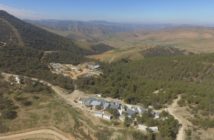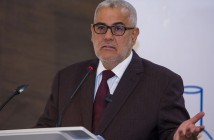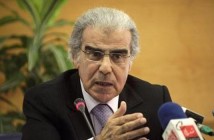Washington, September 26, 2011—A new report from the World Bank and IFC released today finds that women still face legal and regulatory hurdles to fully participating in the economy.
Women, Business and the Law 2012: Removing Barriers to Economic Inclusion finds that while 36 economies reduced legal differences between men and women, 103 out of 141 economies studied still impose legal differences on the basis of gender in at least one of the report’s key indicators. The report also identifies 41 law and regulatory reforms enacted between June 2009 and March 2011 that could enhance women’s economic opportunities.
Globally, women represent 49.6 percent of the population but only 40.8 percent of the workforce in the formal sector. Legal differences between men and women may explain this gap. The report shows that economies with greater legal differentiation between men and women have, on average, lower female participation in the formal labor force.
“Competitiveness and productivity have much to do with the efficient allocation of resources, including human resources,” said Augusto Lopez-Claros, Director, Global Indicators and Analysis, World Bank Group. “The economy suffers when half of the world’s population is prevented from fully participating. It is certainly no surprise that the world’s most competitive economies are those where the opportunity gap between women and men is the narrowest.”
The report measures such things as a woman’s ability to sign a contract, travel abroad, manage property, and interact with public authorities and the private sector.In all economies, married women face more legal differentiations than unmarried women. In 23 economies, married women cannot legally choose where to live, and in 29 they cannot be legally recognized as head of household.
Every region includes economies with unequal rules for men and women, although the extent of the inequality varies widely. On average, high-income economies have fewer differences than middle- and low-income economies. The Middle East and North Africa have the most legal differences between men and women, followed by South Asia and Africa. In Africa, a notable exception is Kenya, which leads globally with the most gender-parity reforms during the past two years. Regionally, the most improvements in gender parity occurred in Latin America and the Caribbean, Europe and Central Asia.
The report can be accessed at wbl.worldbank.org.
About the Women, Business and the Law Project:
The project measures how regulations and institutions differentiate between women and men in ways that may affect women’s incentives or capacity to work or to set up and run a business. Women, Business and the Lawobjectively measures such legal differentiations on the basis of gender in 141 economies around the world, covering six areas: accessing institutions, using property, getting a job, providing incentives to work, building credit, and going to court. While the project provides a clear picture of gender gaps based on legal differences in each economy, it is a simple snapshot measuring only legal differentiation. It does not capture the full extent of the gender gap, nor does it indicate the relative importance of each aspect covered. For a collection of national legal provisions impacting women’s economic status in 183 economies, please visit the Gender Law Library.
About the World Bank GroupThe World Bank Group is one of the world’s largest sources of funding and knowledge for developing countries. It comprises five closely associated institutions: the International Bank for Reconstruction and Development (IBRD) and the International Development Association (IDA), which together form the World Bank; the International Finance Corporation (IFC); the Multilateral Investment Guarantee Agency (MIGA); and the International Centre for Settlement of Investment Disputes (ICSID). Each institution plays a distinct role in the mission to fight poverty and improve living standards for people in the developing world. For more information, please visit www.worldbank.org, www.miga.org, andwww.ifc.org.
Contact:
Nadine Ghannam, nsghannam
World Bank report : Women, Business and the Law 2012: Removing Barriers to Economic Inclusion
Share.






